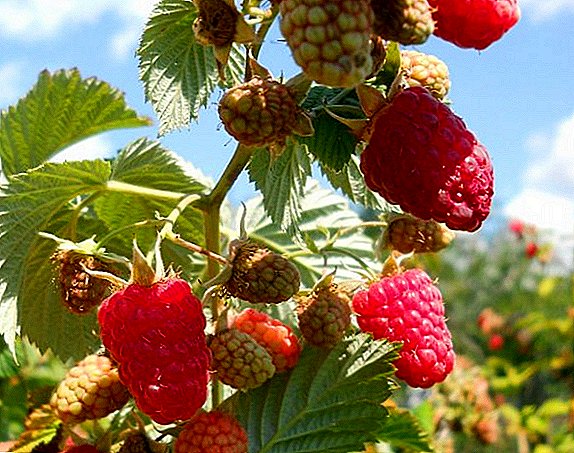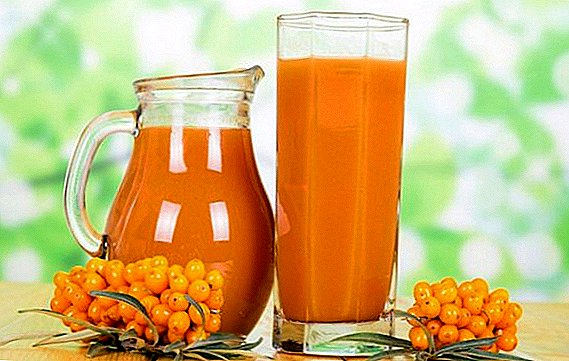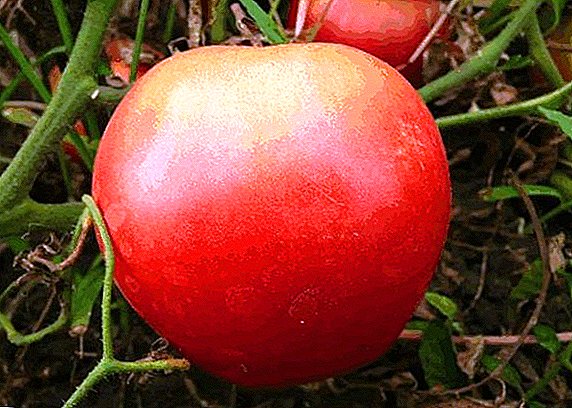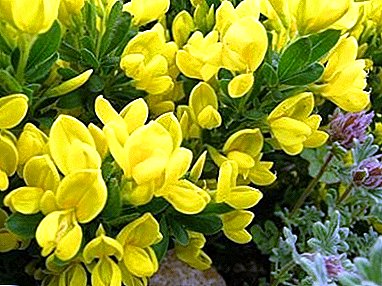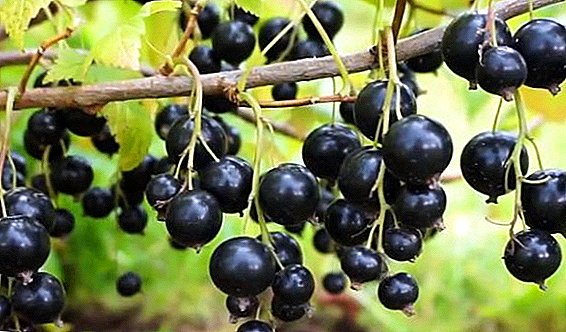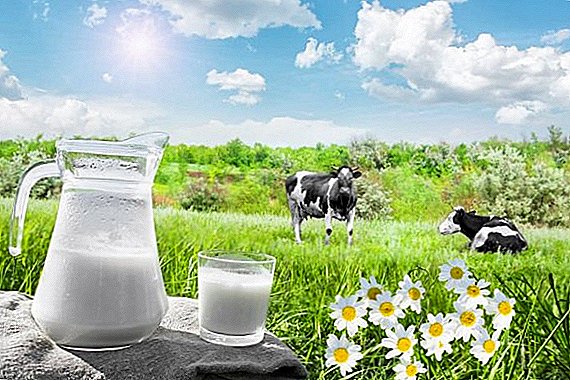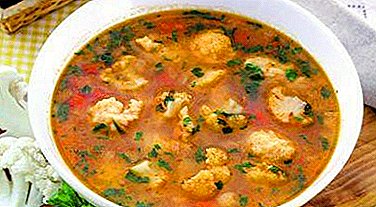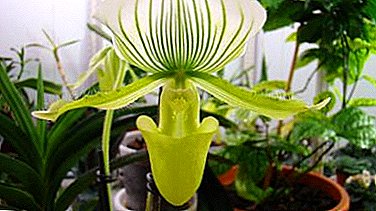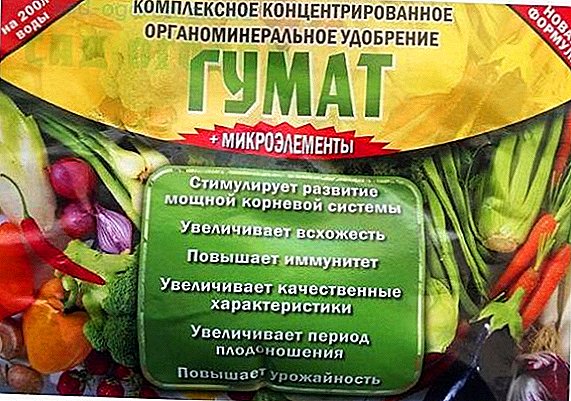 Fertilizers, such as potassium and sodium humate, have long become popular dressings. They are easy to use, but at the same time very effective.
Fertilizers, such as potassium and sodium humate, have long become popular dressings. They are easy to use, but at the same time very effective.
Humates - what is it
Consider the humates better and define what it is. Humates are a large group of drugs, they are made of salts of humic acids, which are readily soluble.

Such drugs apply in:
- animal husbandry;
- crop production;
- medicine;
- drilling;
- construction;
- land restoration;
- ecology.
Did you know? Humates are natural substances. They are made from manure, plant residues, silt, peat extract.Humates are produced as ballast and ballast-free fertilizers. Ballast free have a higher content of active substances, so they are called growth stimulants; and ballast is called fertilizer.
Types of humates
Let's look at what humic fertilizers are and what types they are. Depending on the raw materials (its quality and characteristics) which was used for the production of humates, they are divided into types. There are two main types of humates - it is sodium and potassium humate.
Considering that sodium and potassium humates are natural supplements, they favorably affect:
- soil physical properties;
- mechanical soil structure;
- chemical and hydrological soil structure;
- soil biological characteristics;
- soil protective properties.
- growing organic agroproducts;
- reduction in production of biotoxins, radionuclides and heavy metals;
- increase in the content of vitamins, proteins and carbohydrates;
- improve the presentation of the grown products.

Also the use of humates in horticulture and horticulture promotes:
- reducing the cost of using nitrogen fertilizing up to 50%;
- increase the effectiveness of herbicides, fungicides and insecticides up to 30%;
- improving the quality of the crop and thereby increasing the selling price within production.
Sodium humate
Let us consider in more detail what sodium humate is. This species is a growth stimulator to increase the growth of shoots, to reduce the fall; increase resistance to factors that during the growing season are stressful for the plant: cold, wet and dry years.
This growth stimulator is non-toxic, has no cumulative properties, has immunostimulating and adaptogenic properties.
Potassium humate
Consider what is potassium humate and what are the types of this fertilizer.
There are the following types of potassium humate:
- Peaty liquid humate
- Peat powder humate
- Humate "Prompter"
Ammonium nitrate and urea (carbamide) are in great demand from nitrogen fertilizers.
It is produced by extracting active substances, such as nitrogen, potassium, phosphorus and other trace elements, during the processing of peat. The popularity of this species is due to its ease of use and efficiency.
Powdered peat humate must be diluted with water, it is also a popular type of humate.
Humate "Prompter" is known as a universal fertilizer. This type of potash fertilizer feeds indoor plants, as well as garden crops.
Useful properties of humates in the cultivation of garden crops
Benefits Humates are:
- Organic raw materials used for the production of humates;
- When using potassium humate increases the yield from 20 to 50%;
- It has a complex effect on the whole plant: it stimulates photosynthesis, increases the surface part of the plant and the root system;
- Growth stimulant is a solution of potassium humate. Fruiting begins earlier in 1-2 weeks, which contributes to obtaining several harvests per season;
- Potassium humate helps to strengthen the plant immunity;
- Potassium humate helps to increase the fruiting period and increase yields;
- The uniqueness of soil microflora contributes to an increase in the rate of seed germination;
- Sodium humate saves the plant from a number of viral and fungal diseases and contributes to the improvement of frost resistance;
- Sodium humate after treatment with pesticides of plants reduces stress;
- Sodium HUMATE is compatible with most mineral supplements, as well as biological and chemical plant protection products.

Features of the use of humates
In the production of humate is enriched with trace elements that are easily absorbed by plants.
Humates recommended for use on:
- Alkaline soils that lack iron;
- Sandy soils that have a low humus content;
- Sour podzolic soils with low humus content;
- Saline soils.
- When soaking seeds;
- When watering seedlings;
- When planting seedlings;
- When planting flower and fruit crops;
- When transplantation of decorative indoor plants occurs;
- During grafting;
- During the growing season;
- When preparing for wintering plants.
Did you know? Humates were created by Professor Khristova Lydia more than 60 years ago. And at the moment they are one of the popular fertilizers, due to its environmental friendliness. They are produced worldwide: in Australia, USA, Germany, Italy.
 Humates are sold in liquid form, powders and tablets. Liquid humates are diluted with water; the powder is stirred with a small amount of water, then brought to the desired volume by adding liquid; Tablets must first be crushed and used further as a powder.
Humates are sold in liquid form, powders and tablets. Liquid humates are diluted with water; the powder is stirred with a small amount of water, then brought to the desired volume by adding liquid; Tablets must first be crushed and used further as a powder.
Presowing treatment
Seed treatment is carried out with humic potash and sodium fertilizers for better development of the plant root system and rapid seed germination. Plants after treatment become resistant to fungal diseases and poor environmental conditions.
For seed treatment it is necessary to dissolve 1/3 teaspoon of humate in a liter of water. Seeds or bulbs must be soaked in a solution of potassium humate and sodium: the seeds - for a day, and the bulbs for 8 hours.
In a solution of sodium humate, seeds are soaked for up to two days, and cuttings for 15 hours. After that, the seeds or bulbs can be planted in the ground. When using humates in liquid form, it is necessary to dilute 10 ml of concentrate with 10 liters of water, soaking seeds lasts 10-15 hours, the cuttings are soaked for 24 hours. To find out how to dilute potassium and sodium humate for plant nutrition, follow the instructions: you need to dilute 3 g of fertilizer (this is a full teaspoon) in 10 liters of water. The concentration of humate is lower than when soaking seeds, because it is used directly as a spray on plants. This method is not only economical, but also convenient in terms of application.
Fertilizer plants
At the beginning of the growing season, fertilizer is applied with potassium and sodium humates, the method of application is as follows: two or four times, depending on the type of plant being treated. Watering plants produce 0.5 liters per plant, then increase the dose to a liter.
There is another recipe solution preparation: It is necessary to take 10 tablespoons of top dressing and dissolve in hot (not higher than 60 ° C) water. It is necessary to leave for a day, periodically stir. Such a concentrate can be stored for a month. Now it will be convenient to use the concentrate, diluting 100 ml per 10 liters of water.

Fertilizer concentrate is also sold. Consider how to apply and fertilize with potassium and sodium humate in liquid form. The solution is prepared as follows: dilute 100 ml of concentrate in 10 liters of water. Apply diluted fluids should according to the scheme:
- Eggplants, tomatoes, zucchini are processed 4 times. The first treatment occurs when the first leaves appear; the second - in the period of budding; third - during flowering; the fourth - with the appearance of fruits.
- Cucumbers are processed 4 times. The first - with the appearance of leaves; the second, third, fourth - the processing interval is 15 days.
- Cabbage is processed 3 times. The first treatment - 2 days after landing; the second - when the head of the ovary; the third after 10 days.
- Carrots are processed 3 times. The first is when it comes up; second, when leaves appear; the third after 10 days.
- Watermelons are processed 2 times. The first is when scourges are formed; the second - in 20 days.
- Potatoes are processed 2 times. The first - with the appearance of leaves; the second - in 30 days.
- Peach, pear, apple, cherry, plum, apricot are processed by humates with microelements 4 times, the instructions for use are as follows: the first treatment is 7 days after the end of flowering; the second - at the very beginning of the fall of the ovary; the third - during the laying of the kidneys; the fourth is when the active growth of the fruit begins.
- Grapes are processed 3 times. The first - in the period of budding; the second - after the flowering phase; the third is the period of development of the berries.

Tillage
Detoxification is carried out to improve the structure of the soil. Humates are used exclusively in powder form.
Humic potash and sodium fertilizer crumbles to the ground, based on 10 square meters, 50 g of humates are used.
It is more convenient to use top dressing before connecting with sand. After the manipulation, the fertilized area must be loosened with a rake.
Important! If the soil is sandy or sandy, then fertilizers can leach out much faster with heavy irrigation and rainfall.Thus, if supplements were applied in the fall, and there was heavy precipitation in the winter and spring, then most likely there will be a shortage of micronutrients of potassium and nitrogen in the soil.
Phosphoric fertilizers are considered to be inactive, they are retained in the soil layer, which was fertilized, and when the soil is digging up, they practically remain in place.
Sandy soils are distinguished by the fact that they often lack magnesium, and carbonate soils are deficient in iron. Thus, humic potash and sodium fertilizers need to be applied to the soil in autumn and spring.

The use of humates with manure
It is recommended to use humic dressing with manure. This will significantly accelerate the growth of plants and significantly reduce the amount of humates, which is necessary for fertilizer, up to five times.
To achieve this effect, manure is mixed with humates three months before fertilizing. The proportions of use are as follows: for 10 kg of manure use 10 g of humates.
Potassium humate and sodium humate: what are the differences and what is better
Sodium and potassium humate - alkali-treated salts of humic acids. When treating plants with potassium humate, they also get potassium, which is an important nutrient.
From potash fertilizers, you can apply potassium nitrate, potassium salt and potassium sulfate.
Sodium humate, on the contrary, prevents plants from feeding with potassium, increasing the content of toxins in the soil. But at the same time sodium supplements also have a beneficial effect on the plant and the soil.
Humic sodium fertilizers have a plus in that their production much cheaper potash, respectively, this fertilizer is popular among the population because of its cheapness.

Although sodium humate and potassium humate, although considered to be practically the same, they affect soil and plants differently. Sodium humate is a growth promoter, and potassium humate is a complex fertilizer that affects both plant development and soil condition.
The quality of humic dressings, regardless of the type, is directly related to the type of raw material from which fertilizers are made.
Important! If the fertilizer is made from brown coal, it will contain impurities of heavy metals. Therefore, when choosing a fertilizer, pay attention to this.Thus, it is necessary to select fertilizers that have been produced from lowland peat. And each type of fertilizer selects individually, depending on what result he plans to get.

Summing up, it should be noted that humates are highly effective fertilizers, which, when used properly, contribute to a large, high-quality and environmentally friendly crop.


